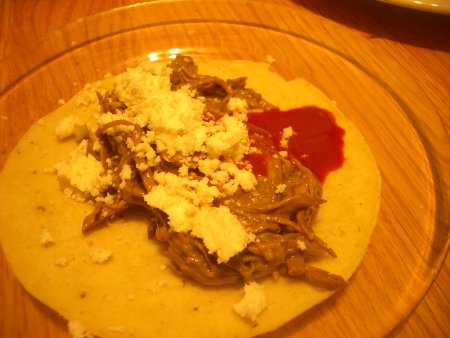I’ve opened a new front to my food frakking: The carniceria.
If you’ve ever gone into a Mexican grocery, you’ve seen the piles of meat behind the glass at the back of the store. As it turns out, you can purchase that meat, usually for one or two bucks a pound, and eat it in the luxurious privacy of your own home. It’s like having a taco cart in your kitchen!
The easiest taco meat to adapt to home use is pastor marinado. You fry it, and you have a taco. This particular batch of meat permanently stained my wooden spoon a distinct shade of red.
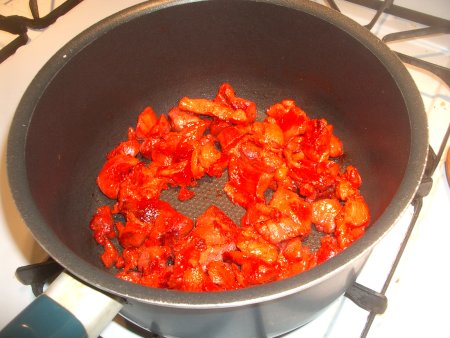
Here’s home-fried taco al pastor from a different carniceria with a cilantro salsa of my own devising.
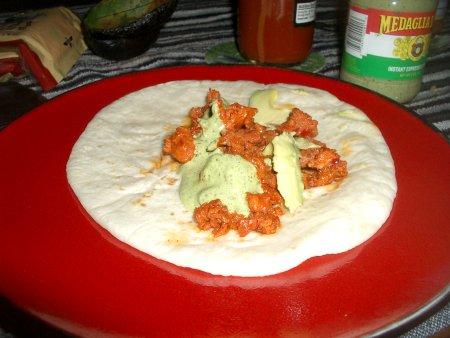
And I think I shall always love milanesa. Here’s some milanesa fried with Japanese bread crumbs.
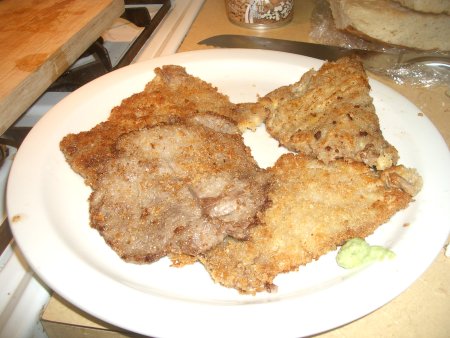
And made into a torta using some focaccia.
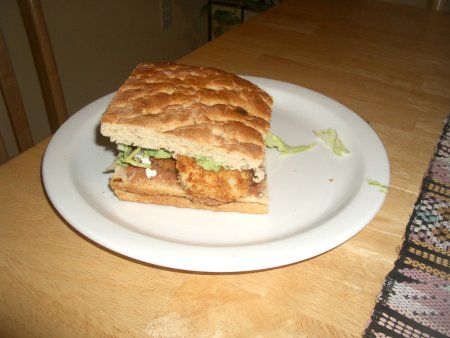
A recent taco meat discovery is deshebrada, or the way that all the taco stands spell it: desebrada. The word means "torn" or "shredded" in Spanish. Here is a taco desebrado from the infamous taco cart on East Sixth. You know, the one near Liberty Bar.
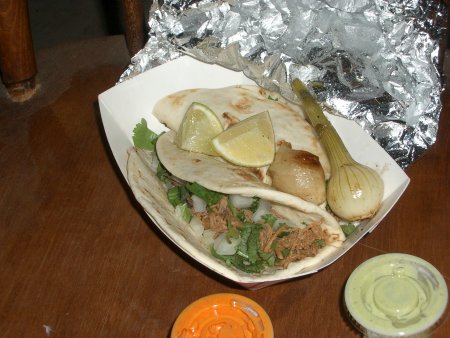
The salsas that come with it are the hottest things I’ve ever been served. The salsa was so hot that it gave me hiccups that were more painful than the burning in my mouth.
I also ran into a version of desebrada at the Taco-Mex taco window on Manor. It’s an odd little establishment. At one time it was the storeroom of a laundromat, but they cut a window in it and made it a taco stand. The taco in question is called tinga de res, a shredded beef suspended in gravy.
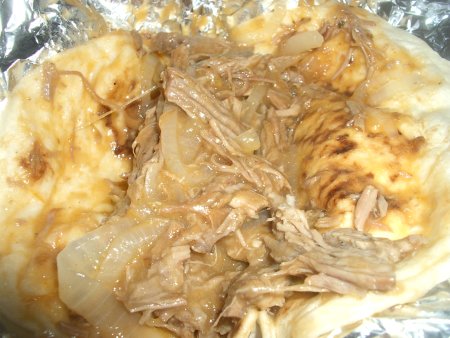
It reminded me of stuff I ate in the elementary school cafeteria, and not in a good way.
So when I ran across some desebrada at the carniceria, I could naught but buy a pound of the meat and attempt my own imitation of the taco cart experience. The first step was browning the meat, and then simmering it for several hours.
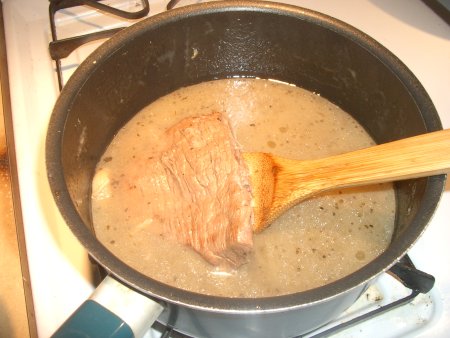
Then I shredded the beef fibers with a fork.
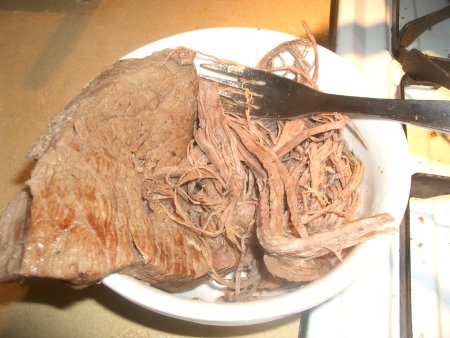
The next step is fairly questionable, but I did it anyway. First I fried the desebrada, and then I added some of its own stock (from the first step) to soften it up, and then I added flour to the stock to make it into a gravy.
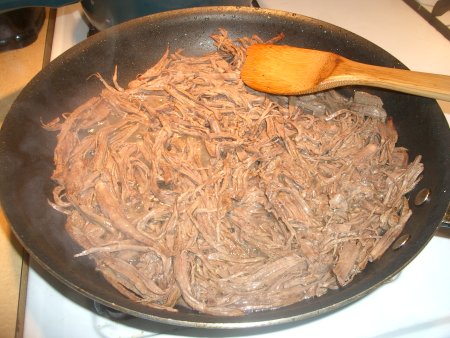
Julia had some of this, and she agreed that my own parallel evolution version of tinga de res was pretty good.
